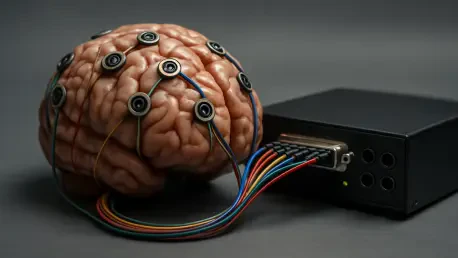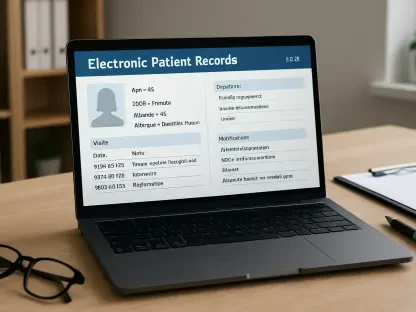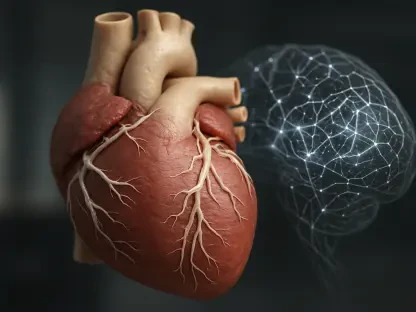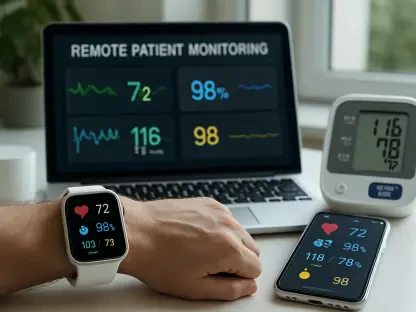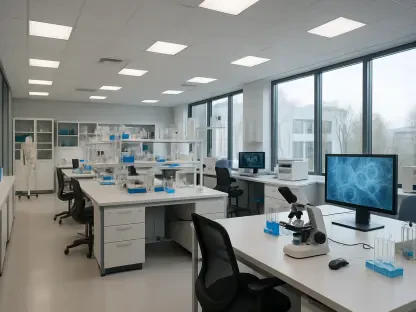Imagine a world where thoughts alone can control a robotic arm, type a message, or even restore lost speech to someone silenced by disease. Brain-computer interfaces (BCIs) are turning this vision into reality, creating a direct link between the human brain and external devices by translating neural signals into actionable commands. This technology stands as a beacon of hope for millions with severe disabilities, such as paralysis or neurodegenerative conditions like ALS, offering a chance to reclaim autonomy and dignity. Beyond medical miracles, BCIs hint at a future where human-machine interaction could enhance everyday life in ways previously confined to science fiction. From groundbreaking surgeries to innovative engineering, the field is advancing at a remarkable pace, driven by global collaboration and a shared mission to push the boundaries of what’s possible. This exploration delves into the core of BCI technology, the personal transformations it enables, and the cutting-edge developments shaping its trajectory, painting a vivid picture of a revolution in human potential.
Decoding the Science Behind BCIs
The essence of brain-computer interfaces lies in their ability to capture and interpret brain activity, transforming it into commands for external devices like prosthetic limbs or computer cursors. These systems rely on sophisticated sensors, often implanted or placed on the scalp, to detect electrical signals produced by neurons. Through advanced algorithms, these signals are decoded into meaningful actions, enabling individuals with severe motor impairments to interact with the world in ways that were once unimaginable. The primary application has been in medical rehabilitation, targeting conditions such as stroke or spinal cord injuries where traditional therapies often fall short. What sets BCIs apart is their capacity to bypass damaged neural pathways, creating alternative routes for communication and control. This transformative potential is not just a technical achievement but a lifeline for those who have lost fundamental abilities, positioning BCIs as a cornerstone of modern therapeutic innovation in healthcare.
A deeper look into the scope of BCIs reveals a technology with far-reaching implications beyond immediate physical restoration. While the focus remains on aiding those with disabilities, emerging research suggests possibilities for enhancing cognitive functions or even integrating with everyday tech for seamless interaction. Global leaders in the field, including companies like Neuralink and Synchron, are driving this evolution with ambitious projects that span from restoring movement to exploring mental health applications. Their work reflects a unified vision of harnessing brain signals not just for recovery but for redefining human capability. The rapid progress in this domain is fueled by interdisciplinary efforts, combining neuroscience, engineering, and artificial intelligence to tackle complex challenges. As BCIs transition from experimental labs to real-world solutions, their role in healthcare continues to expand, promising a future where the mind’s potential can directly shape the environment around it, breaking barriers once thought insurmountable.
Human Lives Transformed by Technology
The real impact of BCIs becomes evident through the stories of individuals whose lives have been profoundly changed by this technology. Consider Keith Thomas, a man left paralyzed from the chest down after a tragic diving accident. Through a pioneering clinical trial involving neural bypass surgery, electrodes were implanted in his brain to detect signals for movement. With the aid of AI, these signals triggered electrical pulses to his spinal cord, enabling him to move his arm and hand again. Astonishingly, improvements in strength persisted even when the system was inactive, suggesting a potential for lasting neurological recovery. This case exemplifies how BCIs go beyond temporary fixes, offering a glimpse into a future where the brain can be rewired to overcome devastating injuries. Such outcomes highlight the technology’s power to restore not just physical function but also a sense of agency and hope to those who felt trapped by their circumstances.
Another remarkable story involves Bradford Smith, an ALS patient who faced the loss of speech and mobility as his condition advanced. With an implant from a leading BCI developer, he gained the ability to edit and narrate a video entirely through thought, using subtle tongue movement proxies interpreted by the system. By integrating an AI-driven voice replicator trained on his earlier recordings, Smith could communicate in his original tone, preserving a deeply personal connection to his identity. This achievement underscores the emotional and social dimensions of BCIs, demonstrating their capacity to rebuild bridges to loved ones and the world at large. Unlike purely physical restorations, this application reveals how the technology can address the profound isolation often experienced by those with severe conditions, proving that its value extends into the realm of human expression and relationships, fundamentally altering the quality of life for users.
Engineering the Future of Neural Connections
At the heart of BCI advancements lies a foundation of precision engineering, where every component must meet exacting standards to interact safely with the delicate structures of the brain. Ultra-fine electrodes, often thinner than a human hair, are designed to detect the minute electrical activity of individual neurons, transmitting data wirelessly to external systems for processing. Machine learning plays a critical role in interpreting these complex signals, ensuring that commands are accurate and responsive despite the brain’s dynamic nature. The challenge of maintaining signal stability over time has spurred innovations in material science, with biocompatible alloys and surface treatments reducing risks of degradation or tissue irritation. This meticulous attention to technical detail is essential for transforming experimental concepts into reliable tools, ensuring that BCIs can withstand the rigors of long-term use while delivering consistent results for patients who depend on them.
Collaboration between tech industries and medical researchers further accelerates the development of BCI systems, making them more accessible and user-friendly. Specialized manufacturers contribute by crafting custom components tailored for neurostimulation, focusing on dimensions and materials that optimize performance and safety. Their expertise helps streamline the journey from prototype to practical application, addressing hurdles like electrode durability and integration with AI platforms. As a result, recent systems have shown unprecedented stability, functioning for months without recalibration, a significant step toward independence for users. This progress reflects a broader trend of prioritizing practicality in design, aiming to reduce the need for constant technical support. Looking ahead, such innovations promise to make BCIs a seamless part of daily life, potentially integrating into consumer technology and expanding their reach beyond clinical settings to enhance human interaction with the digital world.
Expanding Horizons Beyond Rehabilitation
While BCIs are widely recognized for their role in physical restoration, their potential to address cognitive and mental health challenges is gaining attention as a frontier of exploration. Preliminary studies indicate that these interfaces could stimulate neural circuits linked to memory, offering new approaches for individuals grappling with conditions like Alzheimer’s or traumatic brain injury. By reactivating dormant pathways, BCIs might help recover lost recollections or bolster learning capacities, presenting an alternative to conventional treatments. This application shifts the narrative from merely repairing the body to enhancing the mind, opening doors to therapies that are both innovative and deeply impactful. The prospect of using brain signals to support mental processes illustrates the versatility of this technology, suggesting that its influence could reshape not just how bodies function but how thoughts and memories are preserved and accessed.
Equally promising is the role of BCIs in managing psychiatric conditions such as severe depression or post-traumatic stress disorder. Targeted brain stimulation through these interfaces could provide precise interventions with fewer side effects compared to broad-spectrum medications, tailoring treatment to individual neural patterns. This precision offers a pathway to personalized mental healthcare, addressing symptoms at their source rather than masking them. As research progresses, the integration of BCIs with psychological therapies could create hybrid models of care, blending technology with human insight for holistic outcomes. Market projections reinforce this optimism, estimating significant growth in the BCI sector over the coming years, with a compound annual growth rate reflecting strong investor and institutional confidence. Such trends point to a future where mental and emotional well-being are as central to BCI development as physical recovery, broadening the scope of human potential that this technology can unlock.
Reflecting on a Boundary-Breaking Journey
Looking back, the strides made in brain-computer interface technology capture a pivotal moment in medical and technological history, where the impossible became achievable for countless individuals. Stories of restored movement, regained voices, and renewed connections paint a vivid picture of lives transformed through relentless innovation. The synergy of AI, precision engineering, and global collaboration has laid a robust foundation, turning experimental ideas into practical solutions that address both physical and emotional needs. Each breakthrough, from stable neural implants to cognitive applications, marks a step toward a world where limitations imposed by disability are steadily dismantled. As this field matures, it becomes clear that BCIs are not just tools but symbols of resilience and progress, embodying humanity’s drive to transcend barriers. Moving forward, the focus should remain on scaling access to these life-changing systems, ensuring affordability, and continuing research into uncharted applications, so that the promise of enhanced human capability reaches every corner of society.
